

|
|
|
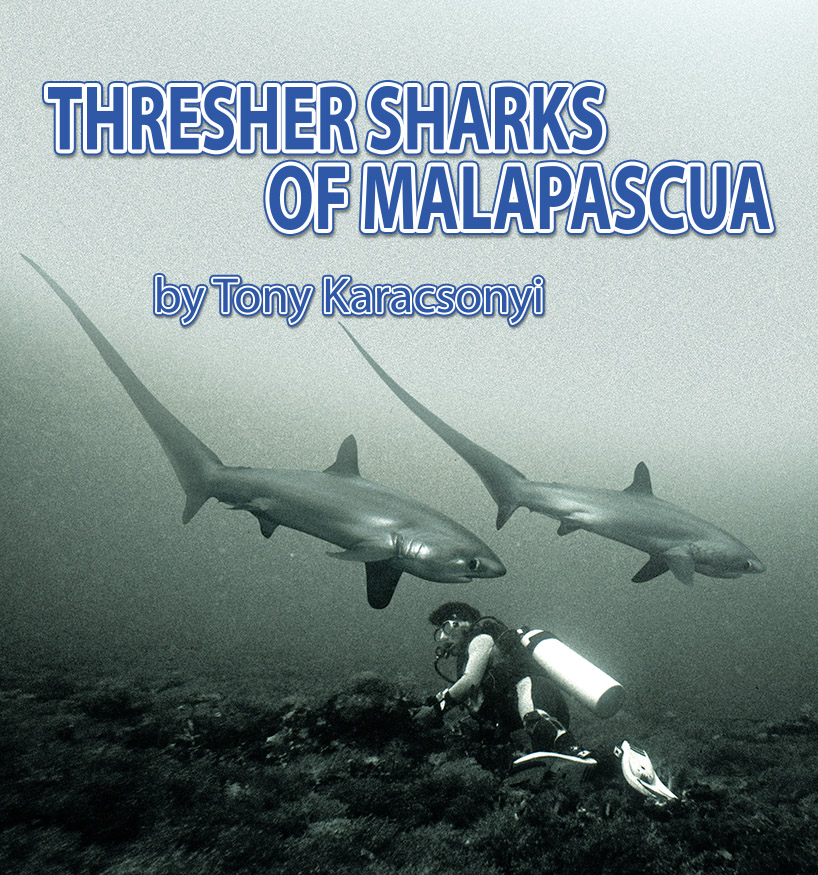 |
| |
The long whip-like tail, large eye, silver sheen on it’s side, and the ease with which it glides through the water — little will prepare you for your first thresher shark sighting.
Inspired by fellow diver; Scotty Tuason’s reports on threshers, I travelled to Cebu in the Visaya Islands, of the Philippines, where I dived with Dutch, German, and Spanish divers, all eager to catch a glimpse of these elusive sharks, which belong to the ‘Mackerel Shark’ family.
Thresher sharks are a pelagic species living in tropical and cold-temperate waters worldwide, growing to almost 25 feet in length. The heaviest shark recorded weighed over 750 lbs. Estimated to live 19 to 50 years; it’s also the shark that sometimes leaps from the ocean, together with the Mako.
Threshers feed on mackerel and small tuna, by encircling schools and stunning then with whips or thrashes of their tail — hence the name; thresher.
Considered a game fish, especially in the U.S. and South Africa, threshers are often hooked in the tail, when they try to stun live fish baits. Threshers are threatened by over- fishing, and a drift net fishery developed in Southern California has rapidly over-fished the stock. Now, the World Conservation Union (IUCN) classifies the Californian population as ‘near threatened.’
Malapascua is believed to be the only place on the globe where divers can reliably see thresher sharks at a place called Monad Shoal at the top of a seamount where they arrive at dawn, to be cleaned by a collection of wrasses. |
|
| |
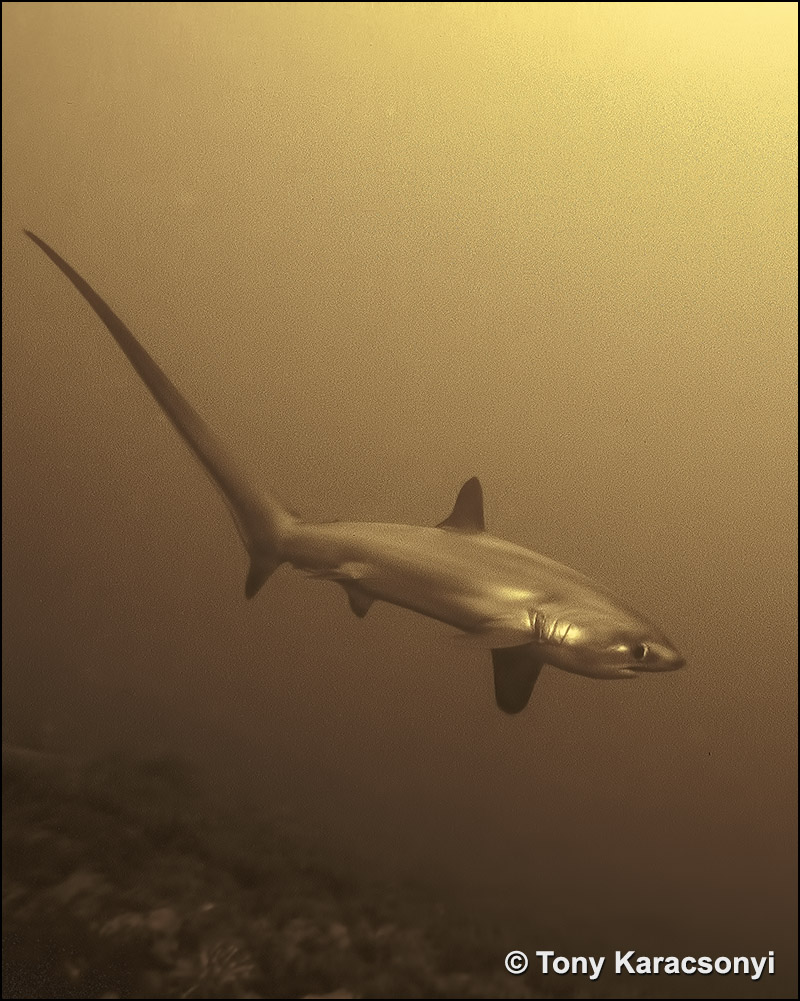 |
| |
Each morning at 6:00 a.m., the 24-meter Filipino outrigger ‘Exotic 3’ scoots out to Monad Shoal to put divers in the water soon after first light. Divers settle on the seamount at a depth of about 23 meters and wait for the sharks to arrive at one of three cleaning stations. Mantas, Mobula Rays, and Eagle rays visit as well.
Threshers are usually very shy, and it is often in the last few minutes of the dive that the threshers can be seen. The trick is to breathe slowly when the sharks arrive, as bubbles spook the sharks. Threshers are often full of surprises, so you must look behind your back and above your head. The sharks sometimes break their own rules of shyness and pass right over your head.
Early in my trip, a pair of threshers arrived at a cleaning station and started circling in front of us, then passed behind and kept circling for some time, about six meters away. My Nikon whirled and I shot 30 pictures in no time.
On another dawn dive in low seven-meter visibility, a three-meter thresher buzzed us, about three meters away. It was a magnificent animal with a fat belly, which Toto and I decided was either pregnant or had eaten an awful lot of fish the night before.
“The last minute of the shark dive is very important. This is when we often see the threshers,” says divemaster Toto. “The first boat and the last boat, are often the ones who see the sharks, because too many divers can scare them away.” The peak summer diving/holiday season in Malapascua is not the best time to see the sharks. The winter months, despite some rain and clouds, is a better time for shark diving. Exotic Dive Resort’s dive masters, Toto, Tutong, and Paul have hosted film crews and underwater photographers from all over the world.
The threshers are an amazing adrenalin rush and are Malapascua’s biggest draw, but what impressed me just as much, was the richness and biodiversity of Malapascua’s soft coral reefs. |
|
| |
 |
 |
 |
| |
Dik de Boer, a Dutch National, and his Filipino wife Cora, started the first dive resort on Malapascua Island back in 1997. They first checked out this little island paradise north of Cebu in 1996 after reading about the island in a ‘Lonely Planet’ travel guide. Dik still remembers seeing the first thresher sharks with his friend Mikael Person in 1997. Over the months and years, with the help of local fishermen, they also found two Japanese WW2 shipwrecks and a Manila-Cebu ferry that was already known as a beautiful wreck dive. With such a selection of wreck dives, thresher sharks, and reef dives, Dik and Cora set up the Exotic Dive Resort, and over the years, expanded the operation to include three large dive boats and a nitrox facility.
On a gentle tide (Edgar, the Captain, knows the tides best) at North Point, you can drift over dense soft coral gardens filled with anemones, clownfish, commensal shrimps, harlequin shrimps, white cowries (often seen on the pale soft corals), butterfly fish, lionfish, ringed pipefish, and juvenile harlequin sweet lips. Exploring a ledge at 18 meters, the overhang is adorned in soft corals, thorny oysters, sponges, and a large grayish frogfish — a well known resident here. There’s also a black, giant frogfish, which dive instructors, Tim and Zoe have seen walking on its pectoral fins.
Gato Island is like something from a Harry Potter movie. It’s a short, sharp rocky island rising from what seems like the middle of nowhere in the South China Sea. It’s a 50-minute boat ride from Malapascua. Nesting seabirds scoot around the island and a colony of flying foxes camps in rainforest trees high on its cliffy shore. Kingfishers flit in and out of its sea caves. Gato Island is constantly bathed in current, giving life to its soft coral canyons and myriad of rare and unusual nudibranchs. Nowhere have I seen so many bizarre nudibranchs of all shapes and forms. |
|
| |
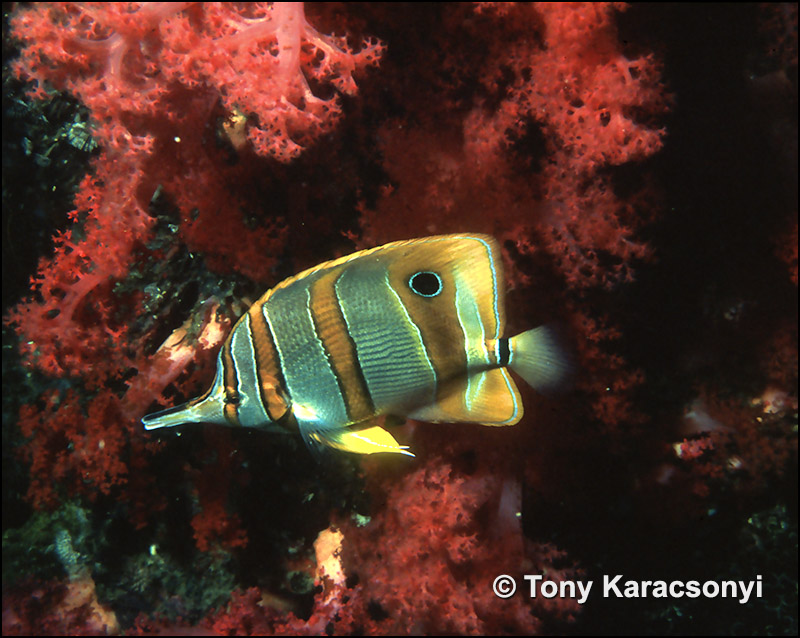 |
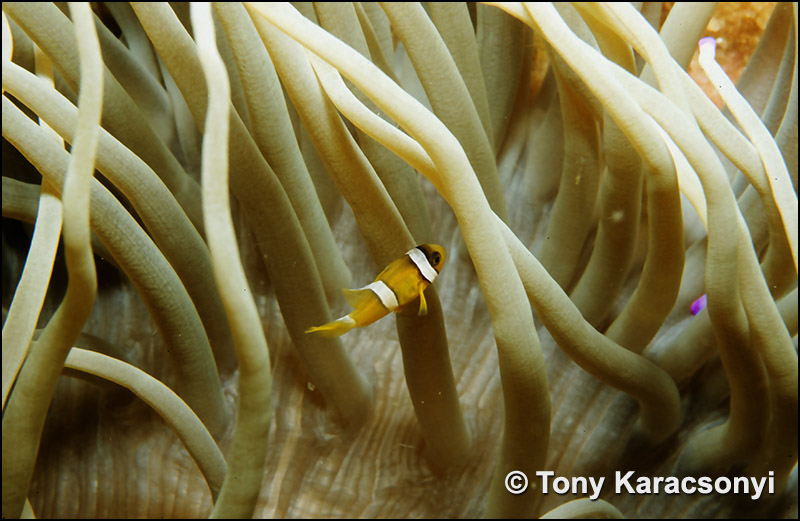 |
 |
| |
Nudibranch egg clusters are prolific and there are pygmy seahorses at 25 meters. White tip reef sharks live in the caves, and one of the caves lead through the center of the island. In the cave, as you leave light at one end and it becomes dark, you swim onward to the blue light on the other side. The cave has several passageways and secret hideaways adorned in thousands of lovely daisy corals, thorny oysters, and sponges.
There is a guard’s house on the sheltered side of Gato Island with a sign that says, Sea Snake and Marine Life Sanctuary. There are many sea snakes, especially at the three to five meter depths, where the juvenile sea snakes hang out. Some of my best sightings were a large banded sea snake at 20 meters, a big coral moray, and a flighty silver eel on the move. Gato Island is full of surprises and every dive had something new to offer, such as porcelain crabs and squadrons of squid.
The Tapilon, is believed to be a Japanese shipwreck and is located 29 meters off Tapilon Island, hence it’s name. Although broken into three or four segments, the Tapilon is a rich and rewarding dive with lots of black coral trees, immense schools of small barracuda (great wide angle scenery), and about 10 very lonely remoras. “For the Tapilon to have so many remoras, there must be some large marine animals around,” says Zoe, a resident diving instructor at Exotic. For those looking for the elusive ghost pipefish, the Tapilon is said to be a prime site to see them, with several sightings by Zoe and Tutong. |
|
| |
 |
 |
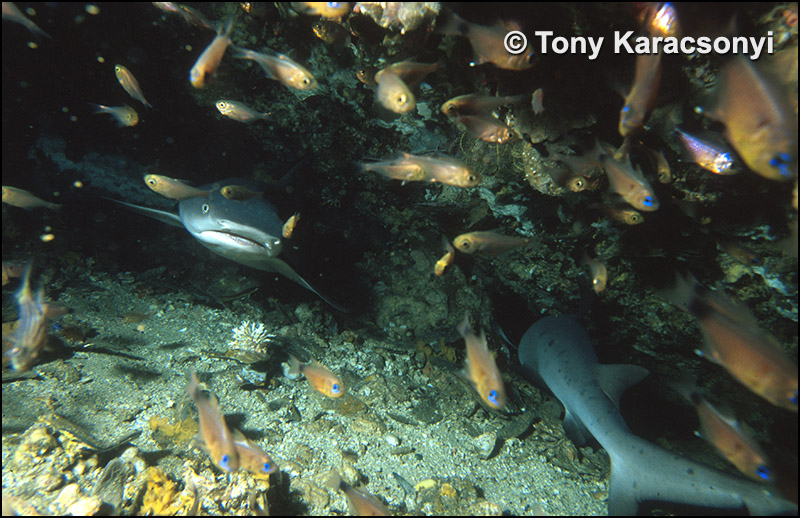 |
| |
An absolute highlight was diving with the colorful mandarin fish at the Lighthouse dive site. The trick is to arrive before dark and find a colony of mandarin fish, then wait and see what happens. As it starts to get dark, you can see the larger males chasing the females. The pair rises up off the coral for a few seconds before discharging their sperm and eggs into sea. It’s a magical scene matched only by the amazing phosphorescence in the ocean at night.
House Reef is an artificial reef created by Dik and the locals, including Edgar, the boat captain. An exciting array of marine animals have made home on all sorts of bits and pieces, which they’ve placed on the sandy seafloor at 12 meters. It’s fascinating to see how different critters are using different types of artificial reef structures. Sea urchins have colonized the roof and bonnets of two jeepney’s, squid have laid eggs in the suspended bunches of tree branches, large healthy sweetlips hang beneath the low bamboo structures, and an orange frogfish lurks on the spherical wire structure.
Three fat and healthy lionfish have made home in one of the jeepney’s — they hang about as if they own it. The other jeepney has a big resident cuttlefish. On the sandy seafloor there’s a razor fish, shrimp gobies, sole, sea biscuits (looks like a mouse), and on one of the large tube like structures, I saw a stunning little juvenile lionfish.
Malapascua is one of the richest places I have ever dived for tropical marine life, and the Exotic Dive Resort is one of the best and well organized land-based diving resorts.
The local Filipino people are warm and welcoming, and you can freely walk around the island and visit the local villages. |
|
| |
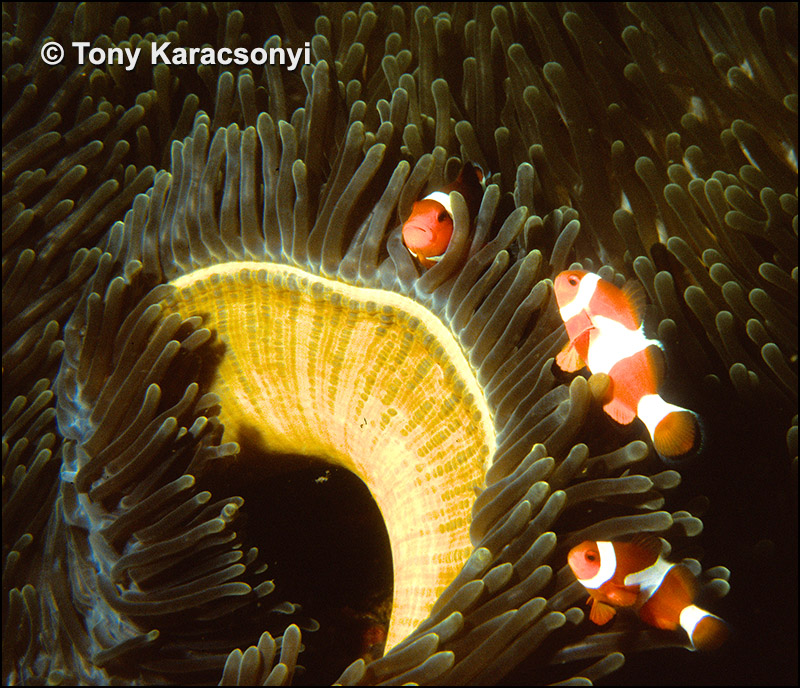 |
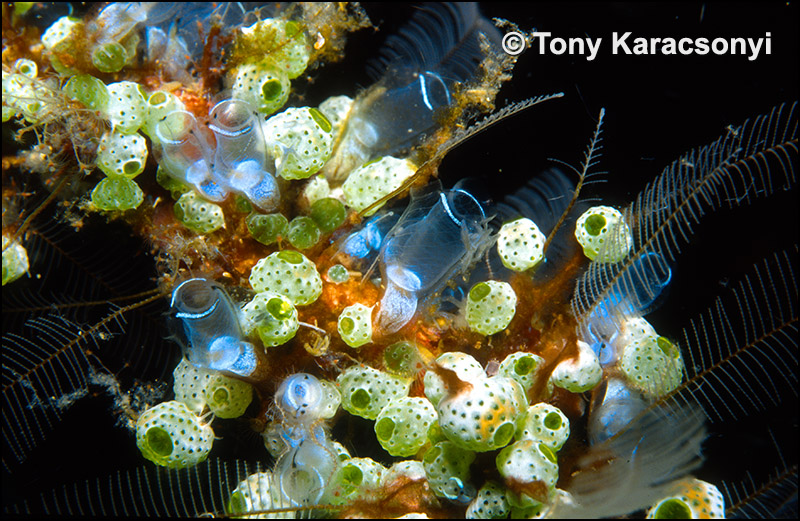 |
 |
| |
More about Exotic Dive Resort
Exotic’ was the first dive shop and nitrox station on Malapascua Island and a one stop diving center with their own accommodations, dive shop, restaurant/bar, transfers, dive safari boat, and Internet service.
Boat dives cost $20 USD and nitrox dives cost $26 USD. Their PADI dive center offers a complete range of dive courses, from junior open water to divemaster. The air and nitrox filling station operates on three Bauer compressors and a 4000-liter air bank. Exotic’ operates four well-maintained traditional Filipino outrigger dive boats, called Bangka’s. The 24-meter Exotic 3 is one of the biggest and fastest outrigger dive boats in the Visayas. Ask about their three and four day diving safaris ($110 USD/diver/day).
Exotic Dive Resort has beach frontage, a beach garden, and rooms range from standard rooms with fan/air to deluxe air conditioned rooms. Standard rooms cost $20 USD/night, and air conditioned rooms cost $40 USD/night (both mid season). Exotic’s in-house restaurant offers an ‘a la carte’ menu, with both local Filipino and international cuisine. Their banana, mango, and pineapple shakes are a taste to savor. Bottled water and soft drinks are readily available.
How to get there
Fly with Philippine Airlines to Manilla and then to Cebu. I found Philippine Airlines to be an excellent carrier. If you arrive late in the day, you will need to overnight in Cebu. In Cebu, you will be picked up by the Exotic Dive Center and transferred to Malapascua by mini bus and boat. The transfer takes about 3.5 hours each way, but is most enjoyable, as you’ll see a lot of street/village life along the way. Once you’re there, it’s feet in the sand, lots of diving, and happy hour at Exotic’s bar.
What to take
Camera, lots of film or digital disk space, and batteries. Nicads can be charged overnight using Exotic’s 24-hour power from it’s three generators.
How to book
Contact Lorenza, Dik, and Cora at the Malapascua Exotic Island Dive Resort at telephone number (63) (032) 4370983 or cell 6309173276689
Email: info@malapascua.net
Web: www.malapascua.net
Philippine Airlines, Sydney Office, Reservations: Telephone 1300 888 725 or 61 2 9279 2020 |
|
| |
 |
|
|
| |
|